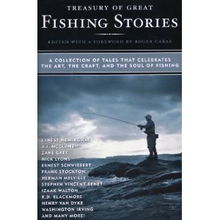The Art of Turtle Fishing: Tips and Techniques for Using a Fishing Rod
Turtle fishing, while not as commonly practiced as traditional fishing, can be a unique and rewarding experience. It requires a different approach and a specific set of techniques, especially when using a fishing rod. Whether you're an experienced angler looking to diversify your skills or a beginner curious about this unusual fishing method, here's a comprehensive guide to help you master the art of turtle fishing.
Understanding Turtle Fishing
Turtle fishing involves using a fishing rod to catch turtles in their natural habitats. This can be done in freshwater, saltwater, or brackish environments, depending on the species of turtle you're targeting. Unlike traditional fishing, the objective here is not to kill the turtle but to catch it alive, which often requires a gentler and more patient approach.
Choosing the Right Equipment
The first step in turtle fishing is selecting the appropriate equipment. Here's what you'll need:
Fishing Rod and Line: A sturdy fishing rod with a medium to heavy action is ideal for turtle fishing. The line should be strong and flexible, capable of handling the weight of the turtle and the environment in which you're fishing.
Hook: Use a large, strong hook that is suitable for the size of the turtle you're targeting. Single hooks are generally preferred to avoid causing unnecessary harm.
Sinkers: Choose sinkers that are heavy enough to keep your bait or lure at the desired depth but light enough to allow the line to move freely.
Bait: The type of bait you use will depend on the species of turtle and the environment. Common baits include fish, shrimp, and squid.
Turtle Catching Bag: Once you've caught the turtle, you'll need a secure bag or container to hold it until you can release it back into the water.
Setting Up Your Rod
Attach the Hook: Thread the hook onto your line and secure it with a knot that can withstand the weight of the turtle.
Add Sinkers: Attach the sinkers to the line, ensuring they are evenly distributed and won't interfere with the movement of your bait.
Cast Your Line: Cast your line into the water, allowing it to sink to the desired depth. Remember to keep your line taut but not too tight, as this can spook the turtle.
Techniques for Catching Turtles

Patience is Key: Turtles are slow-moving creatures, so patience is crucial. It may take hours or even days before you get a bite.
Bait Placement: Position your bait at the turtle's level in the water. If you're fishing in a shallow area, you may need to adjust the depth of your line.
Use Live Bait: Live bait, such as small fish or shrimp, can be more effective as turtles are more likely to bite if they see movement.
Keep Moving: Periodically move your bait around to mimic natural movement and attract the turtle's attention.
Read the Water: Pay attention to the water's surface for any signs of turtle activity, such as disturbances or movements.
Reeling in the Turtle
When you feel a tug on your line, it's time to reel in the turtle:
Maintain Control: Keep a steady and gentle pull on the line to avoid startling the turtle.
Avoid Sudden Movements: Sudden movements can cause the turtle to panic and may result in injury.
Secure the Turtle: Once you've brought the turtle close to the shore or boat, carefully secure it in your turtle catching bag.
Releasing the Turtle
After you've caught the turtle, it's important to release it back into the water as quickly and gently as possible:
Prepare for Release: Make sure the turtle is in a stable position before you release it.
Release Slowly: Gently lower the turtle into the water, allowing it to swim away on its own.
Monitor the Turtle: Observe the turtle to ensure it is swimming away on its own before leaving the area.
Safety and Conservation
Turtle fishing is a unique and exciting activity, but it's important to remember that turtles are protected species in many areas. Always obtain the necessary permits and follow local regulations. Additionally, it's crucial to handle turtles with care to minimize stress and injury.
Conclusion
Turtle fishing can be a challenging but highly rewarding experience. By using the right equipment, mastering the techniques, and handling turtles with respect, you can enjoy this unique form of fishing while contributing to the conservation of these fascinating creatures. Happy turtle fishing!












